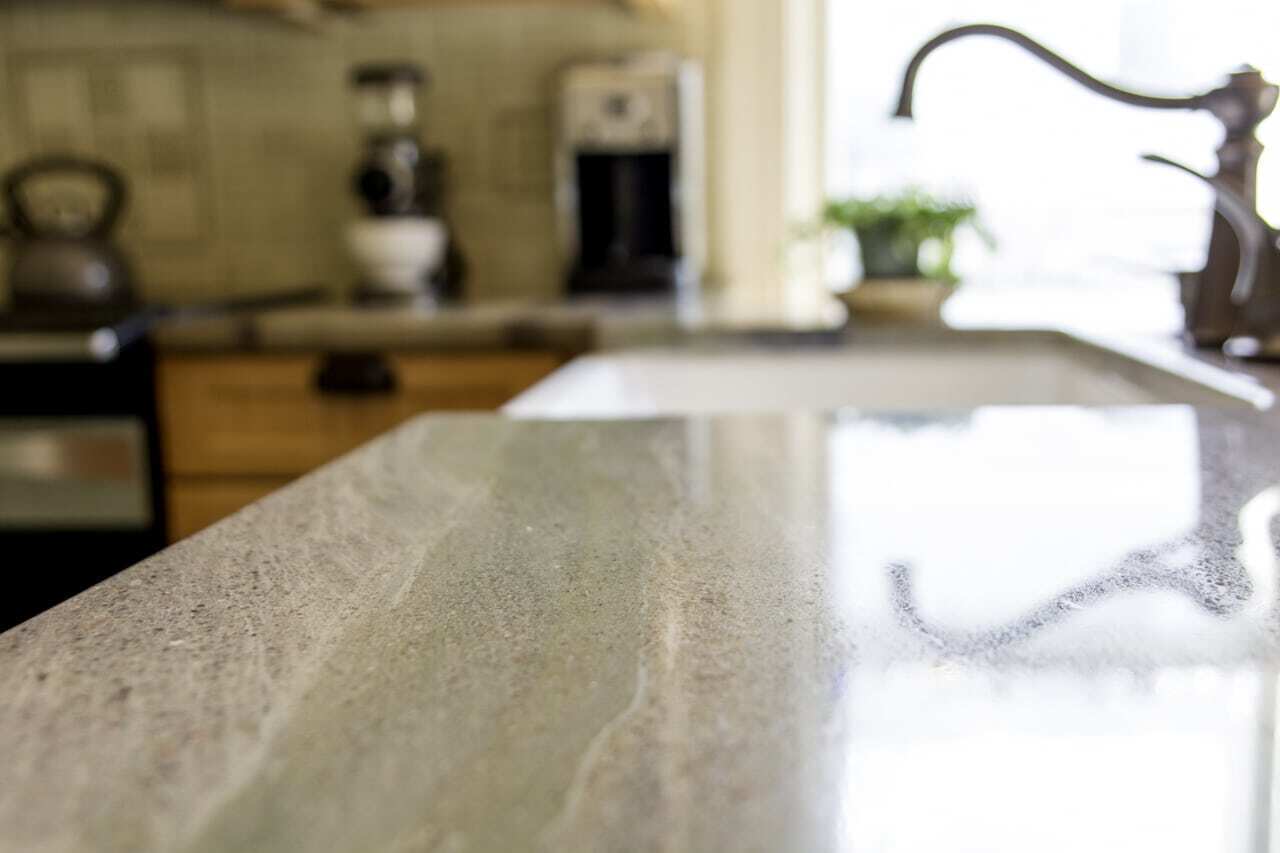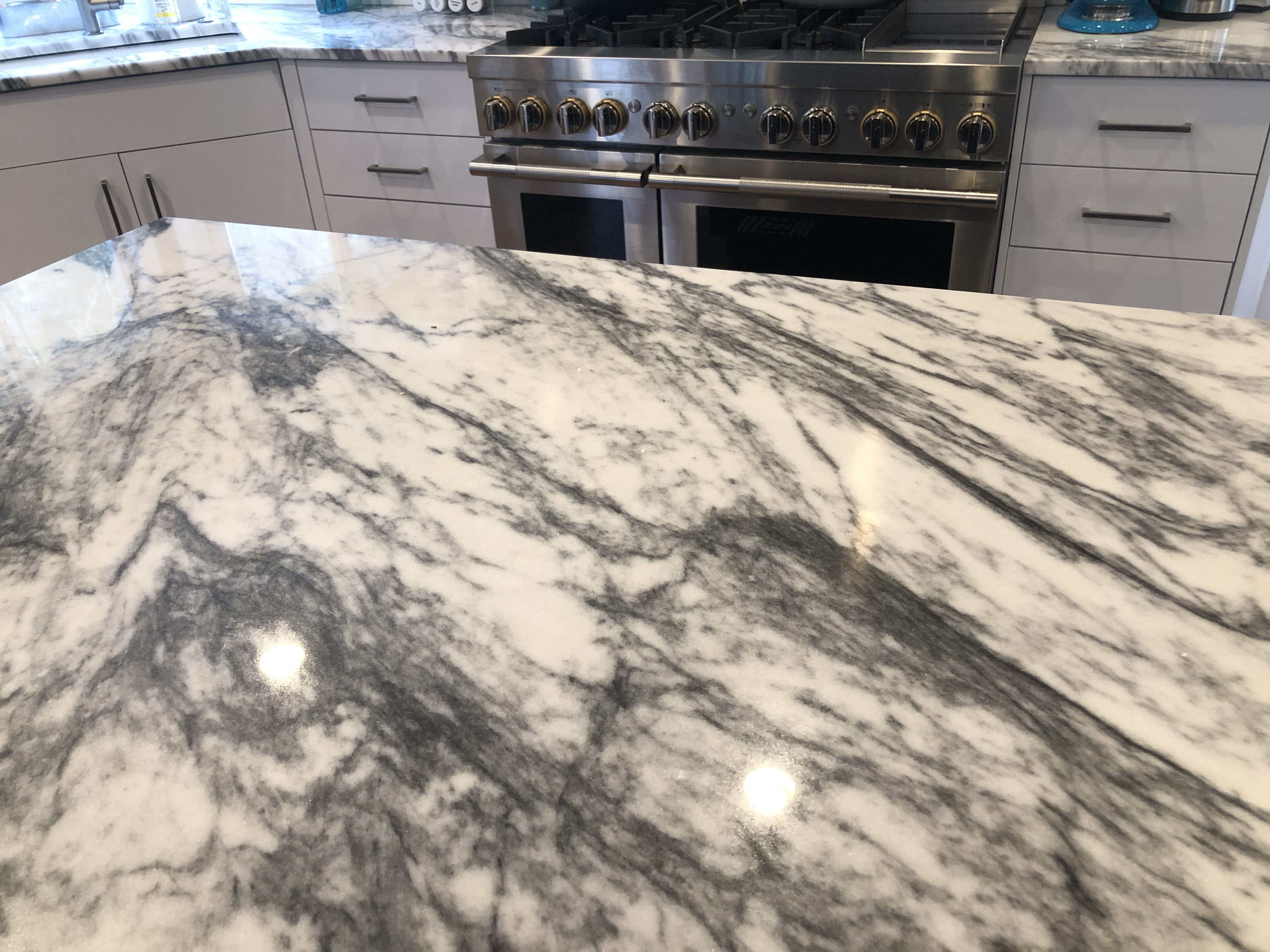One of the biggest investments in your kitchen remodel may be your countertops, especially if they’re natural stone, so it makes sense to protect them. Here are some of the best ways on how to seal granite countertops and marble ones.

Granite and marble countertops are meant to be durable, but leaving spills for too long or simply not cleaning the surfaces properly could damage those surfaces. That’s why it pays to properly seal and protect them. Here’s how to get started.
Do granite and marble countertops really need to be sealed?
Marble is a fairly porous material, so dark liquids like wine or coffee can seep into the stone if left unchecked, causing it to stain. Even water can create marble damage if left too long.
Granite is more naturally stain resistant than marble as it’s less porous, making it harder for liquids to penetrate the surface and mar it. But even most granite options should be sealed to provide maximum protection.
What type of sealant should I use?
Sealants generally come in two varieties: water-based and solvent-based. Water-based are typically better for the environment, while solvent-based may provide better long-term protection as they can penetrate farther into the stone.
For Granite countertops
If you’re sealing granite, look for sealants with the active ingredient fluorocarbon aliphatic resin. This will provide long-lasting protection — up to several years — versus several months with other types of products. It may cost a bit more, but the extra protection not only lasts longer, the substance also effectively resists oil and water. You’ll also want to look for sealers that are safe to use around food.
Also, opt for sealant that’s specifically designed for granite surfaces. The most effective ones are usually called penetrating sealants or impregnators, which soak into the stone through the surface.
Try to avoid ones that use citrus ingredients or linseed oil, as both can discolor your granite.
For Marble countertops

When sealing marble countertops, you’ll again want to look for a product that’s designed for that surface and are non-toxic, or labeled “food-safe.” Also determine whether you have polished or honed marble. Honed marble may absorb more sealant so look for one that’s specific to your stone type.
Avoid sealants primarily used for bathrooms, ones that contain citrus ingredients, or ones with linseed oil, as they may not be food safe and/or may stain your marble.
When to seal granite and marble countertops
Before you get started, you’ll want to know whether it’s time to seal your countertops or not. An easy way to check is by using a small amount of mineral oil or water.
With mineral oil, choose a less commonly used area of your countertop and sprinkle a few drops on it. After about 10 minutes, wipe it up with a cloth. If a dark spot appears, it’s time to seal your countertops. The dark stain will disappear on its own within an hour.
You can do the same sprinkle test with water. If the stone absorbs the water within 5 minutes and starts to darken, then it’s time to reseal your countertops.
How to seal granite and marble countertops
Step 1: Thoroughly clean the surface you plan to seal
Once you’ve found the right sealant for your countertops, you’ll want to deep clean those surfaces about 24 hours before you do the actual sealing. This will help remove any surface grime and stains, and ensure a more even application.
Start by removing everything from the counters and wiping them down. Then generously apply a natural stone cleaner and polish it with a microfiber cloth. After the surfaces have been cleaned, dry them with a cloth, making sure they’re completely dry. This will help the sealant better adhere to the surfaces.
Step 2: Test the sealant
Before you start using the sealant, read the directions carefully to make sure you apply it correctly, in the right quantities, and with the correct number of coats. Manufacturer instructions can vary depending on product so this is an important step.
Then test the sealer on a small portion of the countertop, either using a spray bottle or by wiping it on with a dry cloth. After about 15 minutes (or the recommended time on the manufacturer’s bottle), wipe off the sealer from the test area and check that there is no discoloration. If all looks good, you can start applying it to the rest of your countertops.
Step 3: Apply the sealant
Spray or wipe the sealant over the counters evenly, ensuring complete coverage throughout. Consider working in small areas instead of over entire countertops at once to ensure a more even layering. You may want to cover up faucets and protect backsplashes to prevent any of the sealant spreading onto unwanted surfaces.
Once it’s been applied, leave the sealant for about 5 minutes (or however long your directions specify) so it can absorb into the stone.
Step 4: Remove the sealant
Once the sealant has remained on the surfaces for the specified amount of time in order to properly absorb, remove any extra with a clean, dry rag, using a circular motion. If your product requires a second coat, follow the instructions on when to apply it. For example, some require a curing period of several hours between coats. Avoid getting your countertops wet during this period as much as possible.
After the surfaces have completely cured, you can place items back on your countertops. To help keep your surfaces clean and stain-free going forward, remember to wipe up spills quickly and don’t let any food grime or grease rest on them for long.
Which stone surfaces do not require sealing?
Not all stone countertops need to be sealed. Quartz for example is a natural stone, but quartz countertops are manufactured by combining the stone with resin. That resin helps prevent staining so you don’t need to, and you shouldn’t, seal quartz countertop surfaces.
Some very dense types of granite like Ubatuba also don’t require sealants as stains have a difficult time penetrating due to the lack of porousness.



